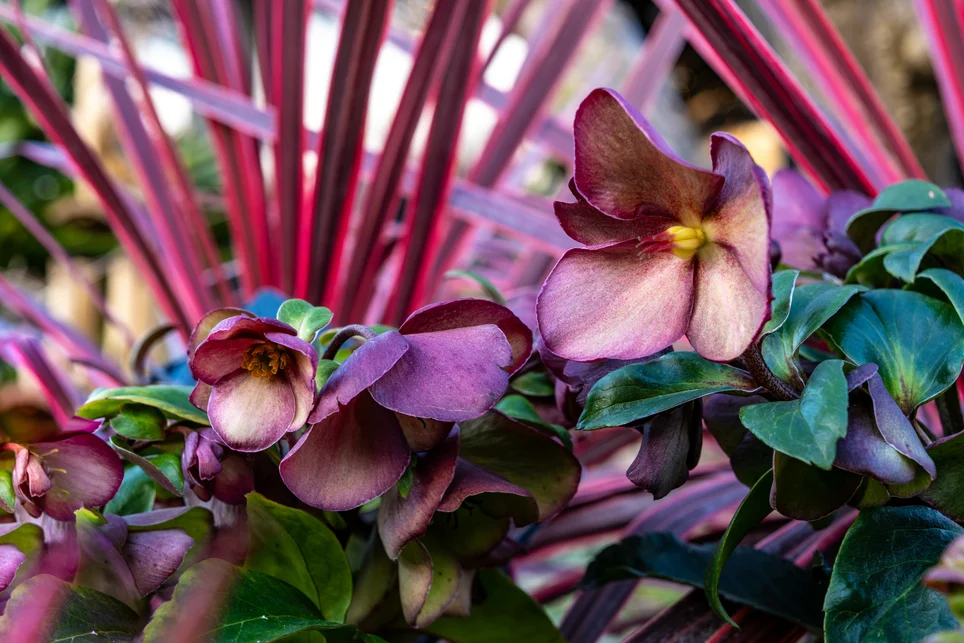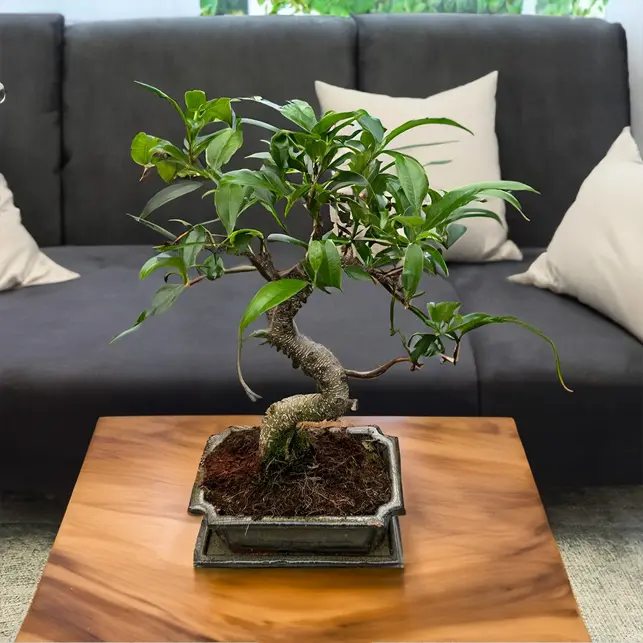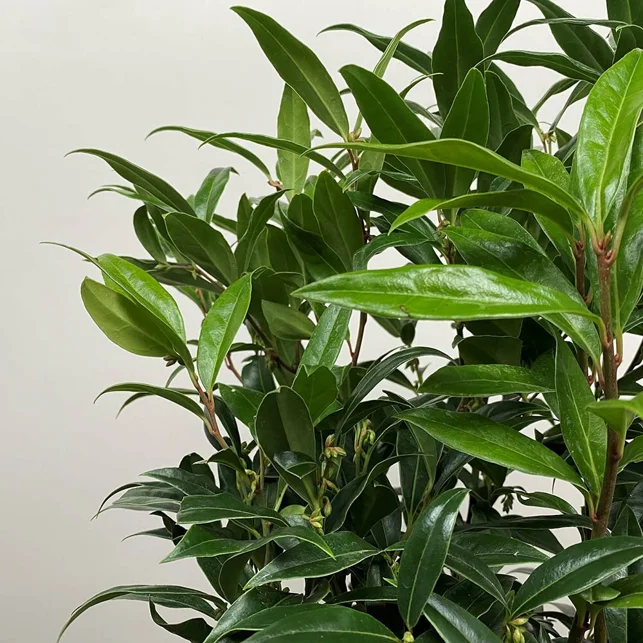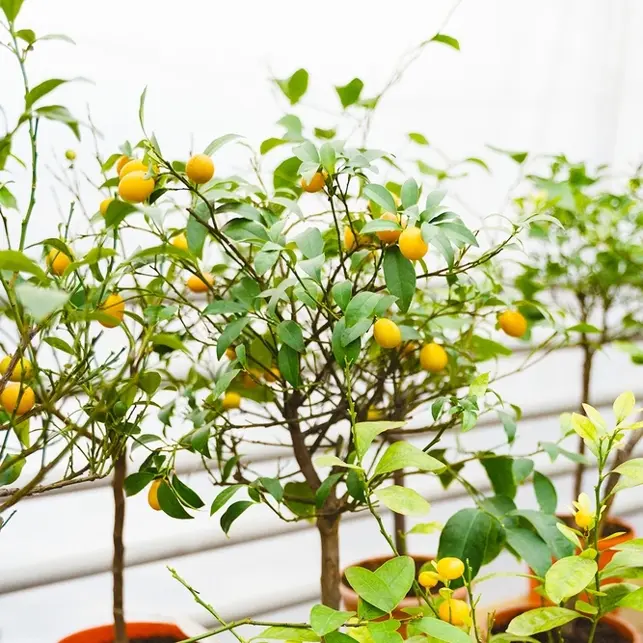
There's something slightly absurd about growing fresh lemons indoors in London. We're hardly the Amalfi Coast, and a British conservatory isn't a Seville courtyard. Places like Menton, France have an exceptional microclimate, sheltered from northern winds with over 316 days of sunshine a year. The Mediterranean proximity and natural protection create ideal conditions for growing citrus trees.
So how do citrus houseplants work in a London climate? Actually, citrus plants adapt in the UK's winter gardens; although most citrus will not grow outdoors in London, housed in a decent planter in a heated conservatory or inside a bright warm window, indoor citrus trees will do just fine. Winter is the sweet spot for citrus growth, with branches in early spring often laden with fruit. Citrus fruits look brilliant against the bleak grey skies of winter.
The appeal of citrus houseplants is obvious. Glossy evergreen leaves, fragrant blossoms, and actual edible fruit growing inside your house make them rather wonderful. It's optimistic bordering on delusional, but growing citrus indoors works. Citrus adapts surprisingly well to London life, provided you understand what you're dealing with and do not expect miracles from potted plants.
Why November Matters for Citrus Indoors
This is when citrus trees start earning their keep. Summer is easy. Put them outside, let the rain do the work, and enjoy the flowers. But come October, they need bringing in and you are committed. That conservatory added for morning light suddenly becomes useful in winter thanks to your citrus houseplants. South-facing sitting rooms that bake in summer and freeze in January allow citrus to thrive in that indoor growing microclimate.
Fruit ripens through winter. Lemons ripen from October through March, mandarins by Christmas if you are lucky. It is deeply satisfying to pluck a fresh Meyer lemon for your gin while sleet hammers the windows outside. Having indoor citrus trees is completely impractical and entirely wonderful.
Understanding Citrus Plants and Varieties
Lemons: The Citrus Gateway
Start here if you are new. Standard lemons produce fruit reliably once established, though reliably means a dozen fruit per year, not the supermarket-sized harvest you imagined from indoor citrus trees. Meyer lemons, technically a lemon-mandarin hybrid, produce more fruit and taste sweeter, with less aggressive acidity. These self fertile plants are gentler for beginners.
The Four Seasons lemon (Citrus Limon) flowers and produces fruit almost continuously. You will have blooms and fruit at the same time, useful for that Mediterranean feel. Red lemons exist too. For those who want to brag at the dinner table, this variety offers pink-blushed skin, more ornamental than practical, striking in minimal interiors.
Limes: Tricky but Worth It
Kaffir limes (Citrus Histrix) are grown for leaves rather than fruit, essential if you are serious about Thai cooking and tired of buying dried leaves. The fruit itself is inedible, but the foliage smells extraordinary, especially when touched. Try kaffir lime leaves on pan-fried asparagus with a touch of pepper.
Standard limes want more warmth than lemons. They sulk in cool conservatories, dropping leaves until conditions improve. Tahiti limes cope better with London temperatures and produce sizeable fruit without drama. Limequats, a lime-kumquat cross, stay compact and produce fruit prolifically. They suit smaller spaces and are great for nervous beginners wanting to grow citrus.
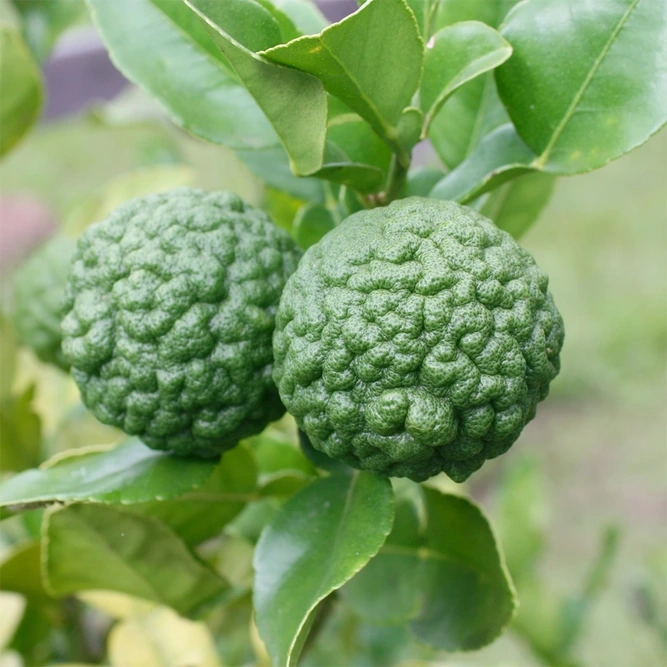
Calamondin Oranges: Reliable and Fuss-Free
If you want guaranteed fruit without fuss, this is the citrus houseplant for you. Calamondin oranges (× Citrofortunella microcarpa) are not true citrus but a hybrid that behaves impeccably indoors. Bitter-sweet fruit appears from autumn through winter, more ornamental than edible though some use them for marmalade or preserve whole in syrup.
Calamondin orange trees tolerate lower light better than most citrus, forgive occasional neglect, and fruit while young. We stock more Calamondin than any other citrus because they work, trained as standards for doorways or as bushes for tables, or as small specimens for bright kitchen windowsills.
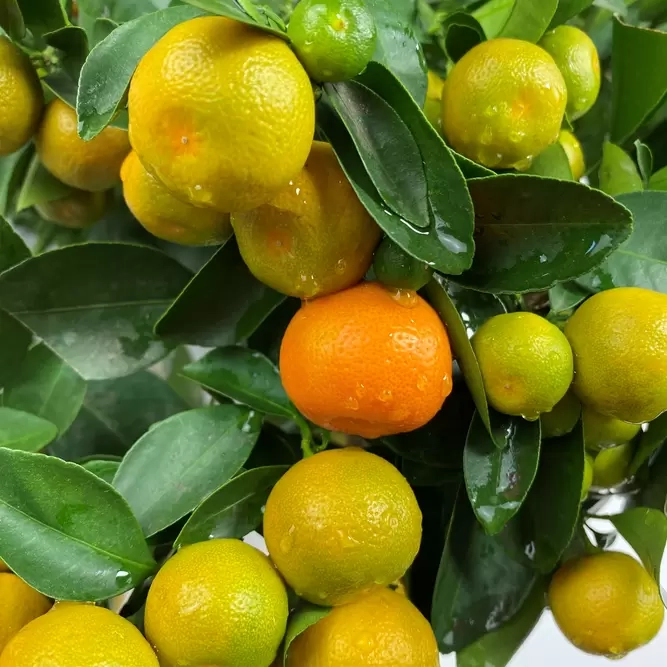
Exotic Citrus Trees
Kumquats can be eaten raw, skin and all. The fruit is tiny and intensely flavoured, and the plants stay compact. Kumquat standards look architectural in contemporary spaces, especially against white walls or alongside mid-century furniture.
Mandarins and clementines want more warmth than lemons but reward patience with sweet fruit by late autumn. They are less reliable in unheated conservatories but thrive in bright sitting rooms with good heating. Bergamot oranges are grown for their peel, used in Earl Grey tea. Grapefruits need substantial space and warmth, impressive in large conservatories. Their blooms are intensely sweet.
| Name | Typical Fruit Period | Key Features | Suitability for Indoor Growing |
|---|---|---|---|
| Lemon | Autumn-Spring | Reliable, classic citrus, glossy leaves | Good |
| Meyer Lemon | Winter-Spring | Sweeter, less acidic, generous fruit, self fertile | Excellent |
| Four Seasons Lemon | Year-round | Flowers and fruits nearly all year, Mediterranean feel | Very Good |
| Red Lemon | Winter-Spring | Pink-blushed skin, ornamental | Good |
| Kaffir Lime | Year-round (leaves) | Grown for aromatic leaves, not fruit, essential in cooking | Very Good |
| Tahiti Lime | Autumn-Spring | Tolerates cooler temperatures, sizeable fruit | Good |
| Limequat | Winter-Spring | Compact, prolific, small fruit | Good |
| Calamondin Orange | Autumn-Winter | Bitter-sweet, ornamental, fruits young | Excellent |
| Kumquat | Winter | Eaten raw, compact, architectural | Very Good |
| Mandarin | Late Autumn | Sweet fruit, needs warmth | Fair |
| Clementine | Late Autumn | Sweet, easy peeler, warmth needed | Fair |
| Bergamot Orange | Winter | Grown for peel, fragrant | Poor |
| Grapefruit | Winter-Spring | Large fruit, needs space/warmth, fragrant blossoms | Poor |
Making Citrus Work in London Spaces
The Conservatory Life
This is the natural London habitat for citrus plants. South or west-facing glass rooms that hit 25°C on winter afternoons, dropping to 8–10°C overnight, suit citrus perfectly. This temperature fluctuation is important since constant warmth produces weak growth and attracts pests.
Standards work best here, trained lemon or lime trees in substantial terracotta pots, underplanted with trailing rosemary or thyme. The height adds structure. The fruit hangs decoratively, and the whole arrangement feels established. To create year round interest, mix citrus with other Mediterranean, acid loving plants. Olive trees, jasmine, even fig trees if you've got room help create a living environment.
Bright Light Rooms
Citrus needs at least five hours of direct sun daily. That south-facing bay window in your kitchen? Perfect. The bright sitting room with floor-to-ceiling windows is ideal. If the light is insufficient, leaves will turn yellow and drop.
Smaller fruits from citrus houseplants suit homes well. A 15cm Meyer lemon on a kitchen windowsill produces enough fruit for weekly use once established. Standards flanking a sofa or beside French doors add a sense of architecture. Modern homes with lots of glass suit citrus plants particularly well. Wall-sized windows provide the bright light citrus demands.
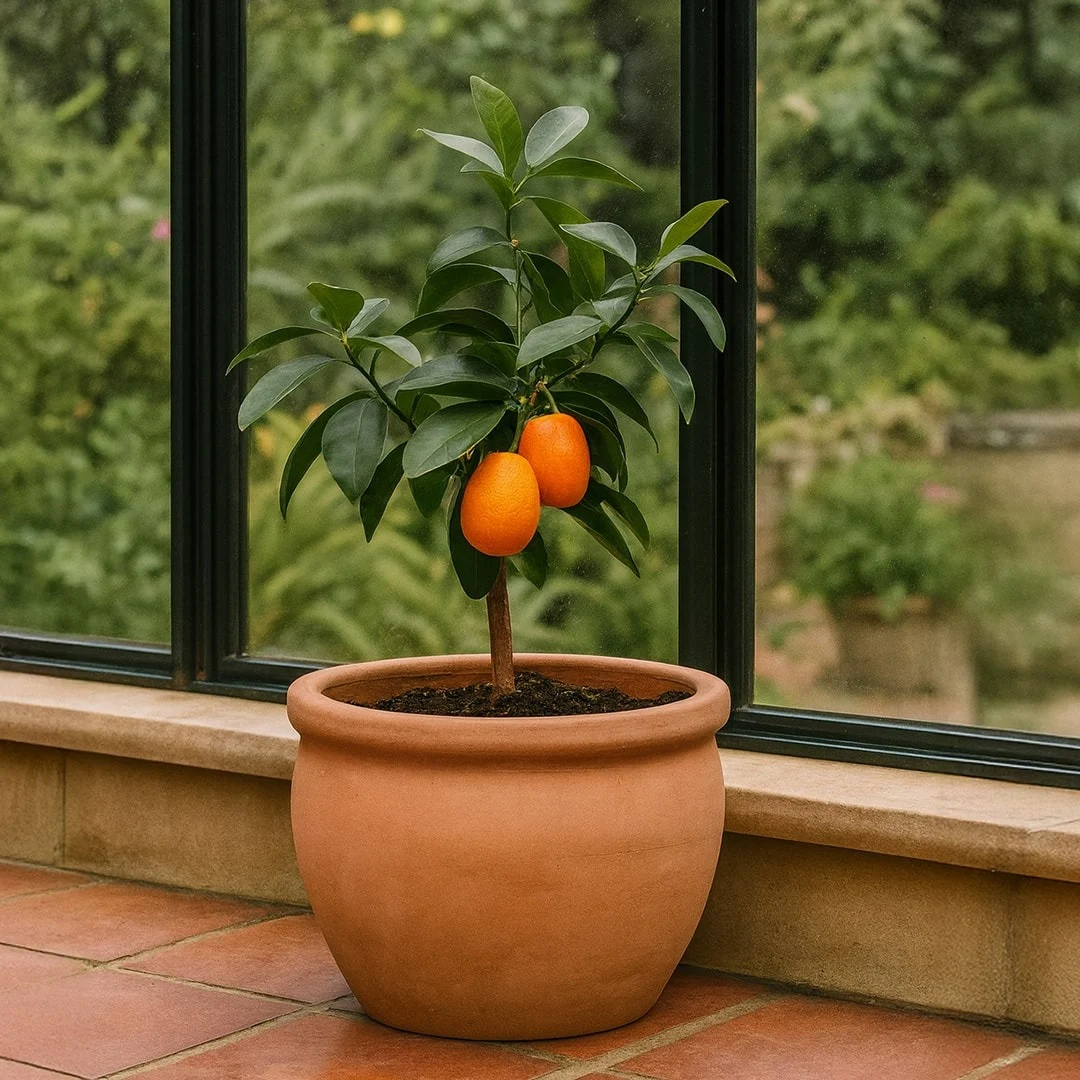
Outdoor Gamble
Citrus houseplants stay indoors October through May in London. Frost kills them, and the climate is not frost-free. Sheltered city courtyards or south-facing terraces work for citrus plants in summer. Moving citrus outdoors for summer is beneficial. Plants grow stronger, fruit sets improve, and your terrace smells like the Côte d’Azur. Return them indoors when temperatures drop below 10°C.
Reality of Care for Citrus Indoors
Light and Position
Citrus needs actual sunshine for several hours daily, not just bright indirect light. South-facing windows work, east or west-facing can work, north-facing does not. LED grow lights change the equation: if you are serious about growing citrus plants in a less-than-ideal spot, proper full-spectrum LEDs work well.
If you are uncertain whether your space suits citrus, it probably doesn't. Citrus will not flower or produce fruit, gradually declining. Rotate plants weekly to prevent lopsided growth toward the window.
Watering
Citrus dislikes extremes. Too dry, leaves drop. Too wet, roots rot. Citrus roots want thorough watering when the top layer of soil mix dries out, then nothing until approaching dryness again. Use your finger to test soil. If damp, wait. If dry, water until it drains through. Empty saucers afterwards. This prevents most citrus failures.
Humidity levels help, but are not critical for indoor citrus trees in London. An occasional misting or pebble trays with water beneath the pot help during winter heating season.
Feeding
Citrus are hungry plants. From March through September, feed weekly with citrus fertilizer such as Citrus Focus with seaweed, high nitrogen for growth, adequate phosphorus and potassium for fruit, iron and magnesium for health. For fruit, feeding is not optional. Chelated iron matters with London’s alkaline water. Yellowing leaves with green veins indicate iron deficiency, easily fixed with trace element supplements.
Soil Mix and Repotting
Use proper citrus or ericaceous compost such as Citrus Focus. Citrus houseplants need slightly acidic conditions that tap water works against. John Innes No. 2 with added ericaceous compost works, or specialist citrus mixes are ideal.
Repot every two to three years in spring, moving up one size. Once mature, only top-dress with fresh compost. Mature citrus in large pots remain stable for years with this maintenance.
Terracotta planters suit citrus better than plastic since they breathe, preventing waterlogged roots. Ensure adequate drainage holes and use gravel in the base.
Winter Survival
Temperature matters for indoor citrus trees. Citrus tolerates brief drops to 0°C but prefers above 8–10°C overnight. Heated homes are perfect if light is adequate. Water less in winter. Overwatering kills more plants than frost. Feed monthly, not weekly. Look for pests: scale insects appear as brown bumps on stems and leaf undersides. Wipe off manually or use horticultural soap. Red spider mite thrives in warm, dry conditions; increase humidity or use biological controls.
Standards or Bush Forms
Citrus trained as standards with clear trunks and spherical crowns cost more but transform spaces. They create presence. Standards flanking doorways or standing in large pots as focal points earn their expense. Standards need trimming in spring to maintain shape. Bush forms suit tables and small spaces, encouraging branching and more flowering. Both fruits readily.
Why Citrus Houseplants Work in London
Growing Mediterranean plants in London may seem futile but Victorian homes had orangeries and lemon trees. Those south-facing extensions and conservatories still make ideal homes for citrus indoors.
Citrus trees suit modern London living. Working from home in bright spaces calls for something more interesting than the standard houseplants. Harvesting fruit in winter feels quietly triumphant.
For gifting, citrus trees beat flowers. They are substantial, ongoing, and a little extravagant. Perfect for housewarmings, birthdays, or anyone with new, light-filled spaces.
The Practical Details
Citrus is restocked throughout November, with availability shifting weekly. Current stock includes Meyer lemons, Calamondin standards, Kaffir limes, and other citrus options.
Visit midweek for selection and proper advice. Citrus is not recommended for north-facing rooms and isn't indestructible. The team understands London conditions and what thrives locally.
Prices range from small Calamondin specimens at £30 up to mature standards at £140–£200. Bigger specimens are established and produce fruit immediately.
Delivery is offered throughout London within the M25. Large citrus trees do not fit easily in cars, and transporting big pots on public transport is rarely easy.
Time to Commit
November planting gives citrus houseplants all winter to settle before spring growth. They establish better now than in March. The best spaces are not about perfection, but working with what you have. Citrus delivers something unusual. Picking fruit inside your London home feels quietly triumphant.
Boma offers both the knowledge and hands-on planting services to bring any citrus vision to life, from initial ideas to vibrant, enduring spaces.
Ready to find out if citrus suits your space? Visit Boma Garden Centre in Kentish Town or browse online for the latest citrus stock. Sometimes the slightly absurd choices are the ones worth making.





